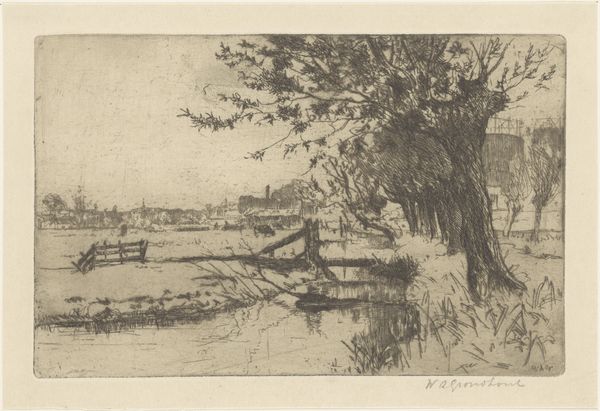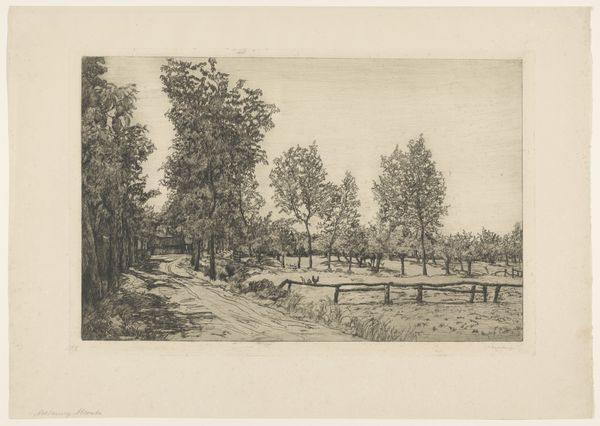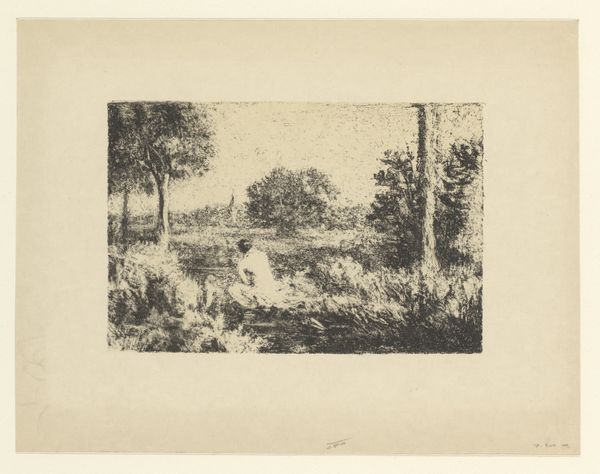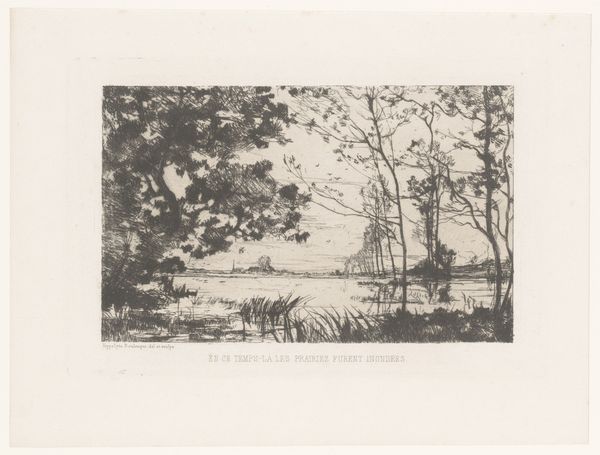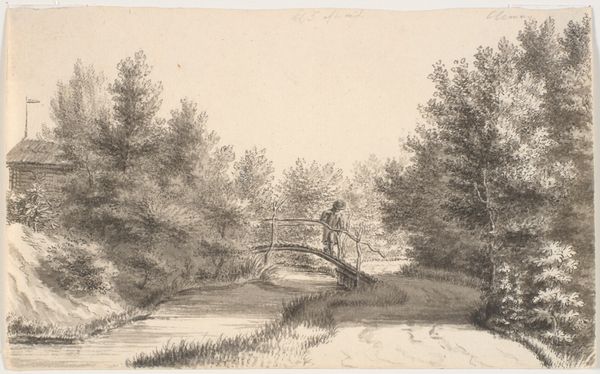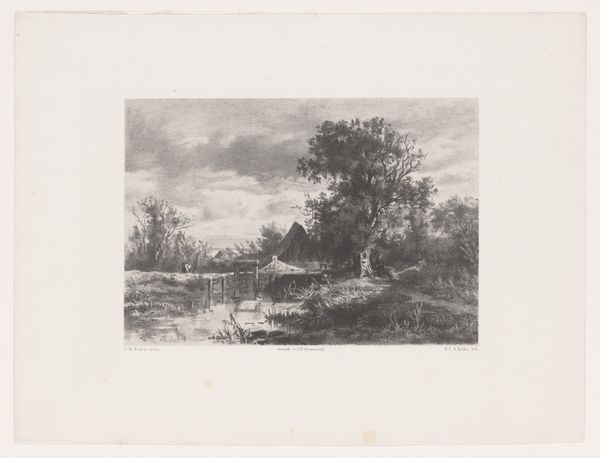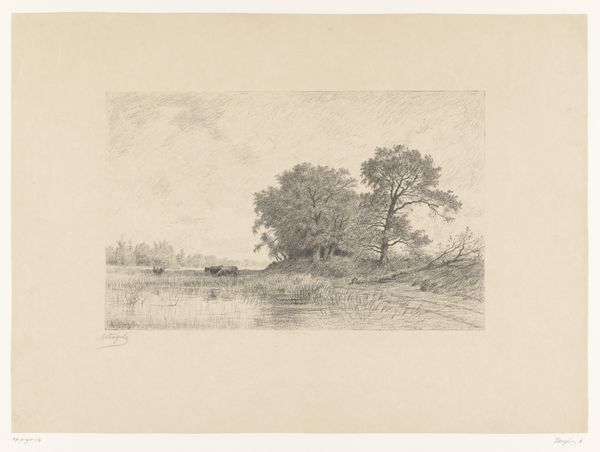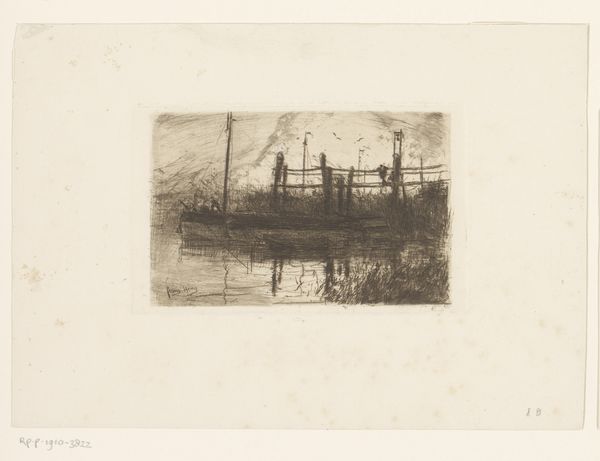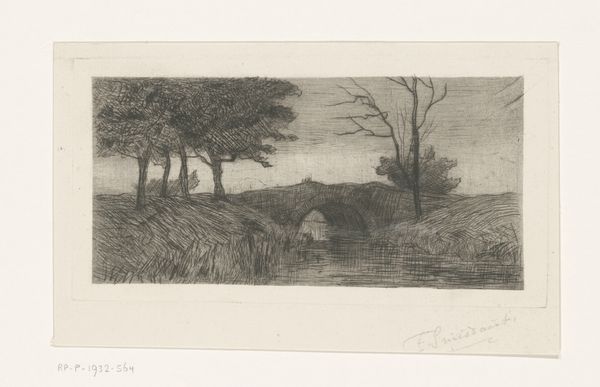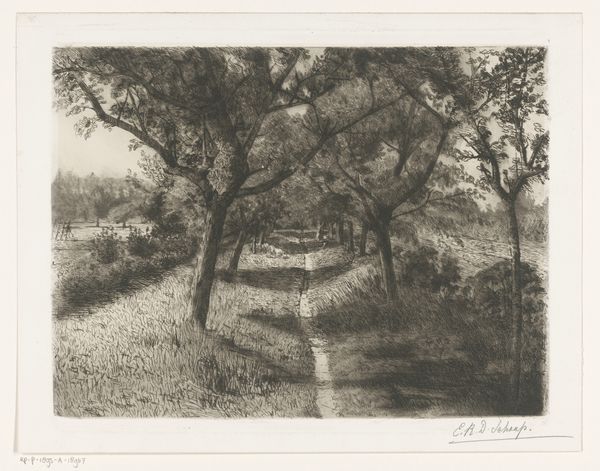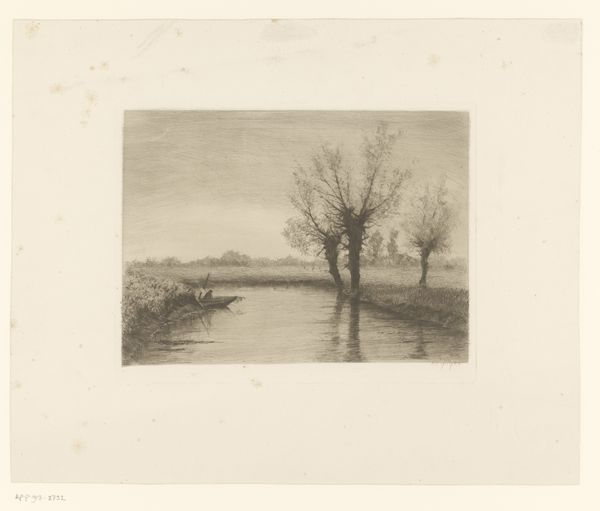
print, etching
#
tree
# print
#
etching
#
landscape
#
etching
#
genre-painting
#
realism
Dimensions: height 248 mm, width 324 mm
Copyright: Rijks Museum: Open Domain
Editor: This etching, "Landscape with Bridge and Farmer," dating from 1876-1911, by Adolphe P.H. J. van Weezel Errens, has such a quiet feel to it. What's striking is its realistic style and how the bridge seems to be a connector of some kind. What do you see in this piece that speaks to you? Curator: It's interesting that you pick up on that sense of connection. This etching, made during a time of significant industrial growth, to me feels like a commentary on rural life. Van Weezel Errens chooses not to depict the burgeoning urban centers. Instead, he gives us a quiet pastoral scene. This connects to larger conversations around labor and class. Notice the single figure of the farmer. What might his placement in this landscape suggest? Editor: It makes me think about how he’s both part of nature but also separate from it, almost small in comparison. It’s like his labor is essential to the landscape, yet he’s just one element among many. Curator: Precisely! This perspective might echo broader social issues, particularly the lives of rural laborers often marginalized and made invisible by rapid urbanization. His toil becomes a quiet act of resistance against that erasure. Does the work's monochromatic palette further enhance this mood for you? Editor: Definitely! The muted tones add to the somber yet resilient feeling. It seems to be a visual elegy for a disappearing way of life, subtly advocating for a recognition of rural contributions. I see so much more depth in this than I did initially. Curator: Indeed. Van Weezel Errens, through this etching, invites us to consider the value and the stories embedded within the seemingly simple act of living and working within a rural landscape, ensuring those narratives endure through time. It makes you wonder what labor is represented, and not represented, in today’s art world.
Comments
No comments
Be the first to comment and join the conversation on the ultimate creative platform.
